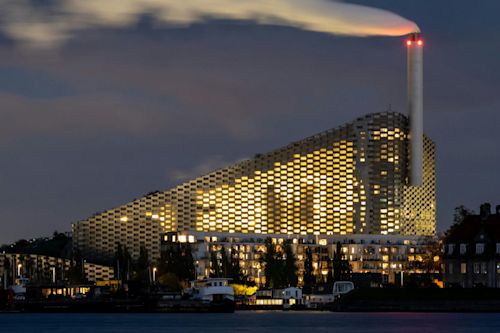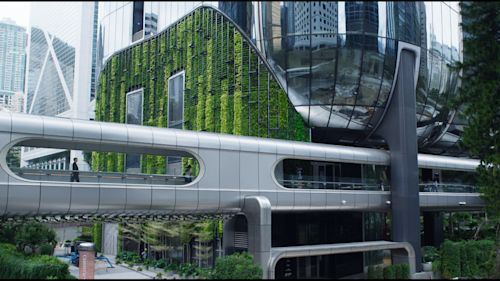It all comes back –in history, in fashion, in design, and also in architecture. Contemporary buildings are influenced by the architectural trends of the past, with the history of architecture itself being a succession of models that return, transform, and renew over time.
Among these, an example that may erroneously seem remote is medieval architecture, a period that was anything but obscure, despite the philosopher and poet Francesco Petrarca, who coined the term ‘Dark Ages’ to describe the centuries between the 5th and the 14th.
Medieval Architecture and Castles

Everyone has a somewhat accurate mental image of a classic medieval castle. These fortified structures vary in characteristics based on historical period and geographical location but typically feature massive stone walls, defensive towers, drawbridges, narrow spaces—except in central reception rooms—and spiral staircases.
Originally, these components were purely safety-oriented, with decorative aspects taking a back seat. Even the battlements, which may seem ornamental, were actually defensive structures. This also applies to the fortified inner courtyards, which were protected outdoor spaces designed to ensure the safety of the castle’s inhabitants..
But all these architectural elements are still present—sometimes explicitly and sometimes more subtly—in contemporary architectural production.
The Modern Interpretation of Medieval Architecture

Aren’t skyscrapers modern interpretations of medieval towers? Historical Italian cities like Bulogna and San Gimignano have often been referred to as the Manhattans of the past. Contemporary architecture also borrows individual elements from the medieval period, reinterpreting them in residential and commercial settings
For example, the spiral staircase, which has an even ulder origin, gained popularity in the Middle Ages. It enabled movement within narrow towers and was primarily useful for defense, as it hindered the simultaneous passage of multiple enemies..
Today, the spiral staircase is a decorative architectural element, often a synonym of elegance that emphasizes and characterizes a vertical space.
Borrowing Security and Privacy Features from Medieval Castles

Architectural elements from fortified buildings of the Middle Ages still populate today’s blueprints, especially in high-risk contexts where both security and privacy are paramount.
Many luxury buildings now incorporate boundary walls or fortified gardens to enhance security while still allowing users to enjoy outdoor spaces..
While modern buildings typically exclude archaic features like drawbridges, it is common to find creatively reinterpreted fortified entrances equipped with modern access systems.
Gothic Aesthetics in Contemporary Architecture

Gothic design was also reinterpreted in hundreds of contemporary buildings. The Hearst Tower in New York, designed by Norman Foster, reconfigures the geometric textures of Gothic churches. While the Centre Pompidou in Paris, designed in the 1970s by Renzo Piano and Richard Rogers, features large spaces and exposed structural elements that reinterpret the great Gothic cathedrals and flying buttresses in a modern style.
Admirers of Renzo Piano can also find a notorious gothic influence in London’s skyscraper The Shard, whose tapered vertical tension recalls the spires of the cathedrals themselves.
Traditional Materials and Sustainability

Rediscovering medieval architecture in a contemporary key can also mean using traditional materials, while exploiting modern knowledge in terms of applications and combination with new ones.
Undoubtedly, the use of wood in the likes of medieval portals is a choice that excels not only aesthetically. It is in fact a material with a unique charm, renewable, manufactured with low carbon emissions and biodegradable. Although, it is still important to take into account the origin of the wood used, making sure that it comes from a forest managed in a respectful way.
The same goes for stone, which is mainly used as cladding, an example of which is the International Design Museum of China, designed by Álvaro Siza and Carlos Castanheira. Opting for local stone, as in medieval times, reduces transport-related emissions and fosters a dialogue between architecture and its environment, as in Alberto Campo Baeza’s project for the Casa de Piedra in Mexico.
A Path of Historical Influence

Architects can draw valuable lessons from the medieval past on sustainability, functionality, and safety. Wooden doors provide sustainable and efficient solutions; fortified castles inspire modern security features; and medieval spiral staircases
show how to merge originality with practicality, optimizing space without sacrificing aesthetics. These principles can steer modern projects toward eco-friendly and functional designs. Indeed, there are still many insights we can glean from the Middle Ages, an underrated era ripe for rediscovery.



